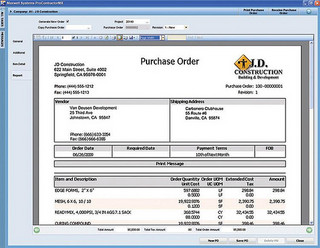How to Choose the Right Procurement Software

Does your head spin when you try to wade through the enormous offerings available for procurement software? Some companies almost give up trying to weigh the pros and cons of all the types of systems and employ an “innie minnie miney moe” approach. Don’t give up. Here is everything you need to know to make a sound decision.
This article is for Premium Members only. Please login below to read the rest of this article.
Not a Premium Member yet? Become one today.
[login_form redirect=’https://www.procurementbulletin.com/how-to-choose-the-right-procurement-software’]
[show_to accesslevel=’Premium Members’]
Software as a Service
Software as a Service, or simply SaaS, is the most cost-effective option, and it eliminates many of your deployment barriers. SaaS is an on-demand software solution. On the con side, SaaS allows for less configurability for your specific company and causes concerns about where your assets are kept.
There are two basic types of SaaS software: on-demand via vendor, and on-demand via outsourcing. This is a pay as you go plan where you get a renewable subscription and access the software through a thin client, usually a web browser.
There are some options with SaaS, such as multi-tenant and single-instance. With on-demand software, the vendor or outsourcing agent is responsible for all the updates, which frees up the internal staff of the company for other tasks.
Perpetual
Perpetual software licensing incurs a one-time cost (though generally a significant one), and the software never expires. There are three basic types of perpetual licensing systems: on-site, hosted, and business process outsourcing.
On-Site
With on-site solutions, the business has complete control of the system. In addition to payment for the software, companies must obtain and maintain servers and other hardware to house the system.
Hosted
Third-party hosting allows you to retain ownership of the system and data, and gives you some control over management of the system. Not all third-party hosts are procurement specialists, and this is a factor to consider when choosing a hosting service.
Business Process Outsourcing
In this model, the company gives more control and a deeper level of ownership to the outsourcing provider. It’s a partnership, in which the BPO partner is responsible for the uptime of the system and the hardware. Often, the BPO partner takes care of the daily purchase orders and manages operational activities.
Making a Choice
Now that we understand the types of procurement software available, how do you proceed to make an informed decision? The first consideration is generally cost. SaaS solutions are generally cheaper than perpetual models, but with the money savings you give up much of the ownership of your systems. You’ll have to determine which model is most in line with the business model your company follows.
Also, consider how much you have to put toward IT resources. The more work and management you keep in-house, the more personnel and resources it will take to install and maintain the system. Complexity is also a factor. Some companies find it prohibitive to install complex in-house systems and retain the day-to-day management responsibilities.
Another consideration is the type of data you hold. Some industries deal with regulated data or confidential information on people, governments, or companies which isn’t allowed or shouldn’t be placed with a third-party vendor. These businesses and organizations are resigned to on-site software solutions.
Fortunately, there is a package out there to work with any budget and business model. [/show_to]








